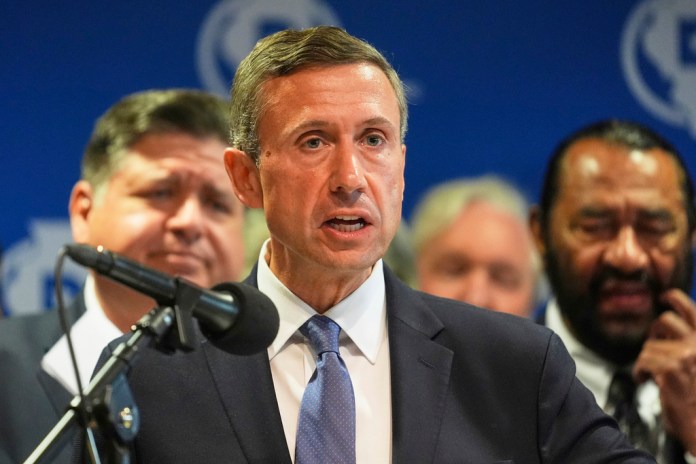Nearly $200 billion in emergency school funding saw slight academic recovery: Studies – Washington Examiner
The summary discusses the ineffectiveness of the $190 billion in federal aid provided to U.S. schools during the COVID-19 pandemic. This massive funding was intended to support academic recovery, but research indicates that it had minimal impact on improving student achievement. The funds were used in diverse ways, some of which included the advancement of political ideologies and non-academic upgrades like updating sports facilities. Notable misuses of the funds included a school district buying an ice cream truck and another financing a lavish visit to Las Vegas. Studies from top academic institutions showed only modest academic improvements relative to the financial input, and minimal or no correlation between additional expenditure and better academic outcomes. The funding is set to expire soon, necessitating decisions on remaining allocations. Critics argue that effective use of funds, rather than the quantity, is crucial in enhancing educational outcomes.
The roughly $190 billion the federal government pumped into schools in response to COVID-19 ultimately did little to aid academic recovery, according to two new studies.
The billions of dollars represent the single largest injection of money into the U.S. education system, but two separate studies released Wednesday concluded that students experienced only a modest amount of academic recovery as a result.
Some of the money was used to advance left-wing ideologies such as critical race theory and gender theory in the classroom. Other schools spent their pandemic funds on non-academic expenses such as refreshing sports fields to synthetic turf and updating sound systems in school gymnasiums and theaters. In two of the more bizarre cases, one school district purchased an ice cream truck with its pandemic relief funds, while another financed accommodations at Las Vegas’s ritzy Caesars Palace.
The studies come as Elementary and Secondary School Emergency Relief funds are set to expire in September, meaning schools will either need to find ways to spend what remains of their allotment or return the leftover cash to the federal government.
ESSER funds were often wasted, as Congress put very few restrictions on the biggest round of funding, a $122 billion boon that only required 20% be spent on academic recovery.
Dan Goldhaber, a co-author of one of the studies, said, “Had there been more pressure around academic achievement, and using the money for that purpose and more guide rails, I think it’s possible the money could have made a much bigger difference,” according to the New York Times.
There was also generally very little oversight of how districts were spending their emergency funds.
Many students are still not on track to catch up to pre-pandemic academic achievement metrics.
“Money itself doesn’t improve student achievement. It matters much more what we do with it,” Jonathan Butcher, senior research fellow at the Heritage Foundation’s Center for Education Policy, told the Washington Examiner. “A certain amount of money does not automatically translate to a certain level of test score gains. There are other reports that schools hired more staff and improved facilities — neither of which have to do with classroom instruction or more class time, in general.”
While the studies found a certain level of bounce-back from the pandemic, they also acknowledge that some of that recovery was not related to schools being flush with federal dollars.
One study came from researchers at Harvard, Stanford, and Dartmouth universities, and the other came from the University of Washington. Both looked at third- through eighth-grade test results from the 2022-2023 school year in 30 states.
Generally, for every $1,000 spent per pupil, school districts saw small increases in math and reading scores, according to both studies. However, as many critics have noted, more money did not lead to more success, and changes such as smaller class sizes and improved schools have been shown to improve academic progress.
“The increases in spending didn’t prevent drastic increases in student absenteeism, for example,” Butcher said. “The school choice programs adopted during the last three years will result in far more positive outcomes for students than the sudden influx of federal money.”
According to the Harvard study, school districts that received the most money, which were the poorest schools, recovered at a faster rate than their richer counterparts that got less money. Districts that spent more per pupil recovered up to 50% of learning loss in math, compared to districts that received less money and saw only a 15% recovery.
However, those numbers were calculated using comparisons to the districts’ pre-pandemic test scores, which were generally already higher in wealthier school districts. While school districts in impoverished areas are still behind pre-pandemic levels, researchers believe the ESSER funding helped some of the recovery.
“Because the federal relief dollars were disproportionately targeted at low-income districts, they are contributing to narrowing the gaps which widened during the pandemic,” the Harvard study stated.
The Biden administration touted the studies, with Neera Tanden, domestic policy adviser, saying, “This new data makes clear that the president’s investment in education helped millions of students regain ground faster,” according to the New York Times.
However, both studies tee up a fresh conversation about school funding. Some advocates, particularly teachers unions, may demand a continuation of pandemic-era funding instead of returning to funding levels seen prior to COVID-19.
CLICK HERE TO READ MORE FROM THE WASHINGTON EXAMINER
“The federal aid was like the first stage of a rocket. It got us going, but had a broad focus and was ultimately insufficient to get us all the way,” Dr. Thomas Kane, a Harvard professor and one of the study’s co-authors, said in a press release. “To complete the recovery, states will need to step up, focusing on academic catch-up efforts, such as tutoring and summer learning, and lowering absenteeism.”
Butcher said he anticipated hearing this argument more as the end of ESSER approaches this fall, saying that interested parties such as teachers unions will begin to use these kinds of data points to make the argument that returning to pre-pandemic funding levels means schools are now dramatically underfunded.
" Conservative News Daily does not always share or support the views and opinions expressed here; they are just those of the writer."




